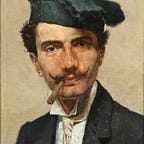Gestalt approach in psychology
I am often asked a question about the Gestalt approach in psychological work. I am glad that you are interested in psychology, this indicates your readiness to change your life for the better!
So, not much about the method.
Gestalt is translated from German as image, figure, form. In the process of self-regulation, a person himself chooses what information is most important for him at the moment — this is a figure. Everything else is temporarily relegated to the background — this is the background. For example, when a person is very thirsty, on a table laden with food, he will highlight a glass of water as a significant figure. But when the thirst is quenched, his attention will switch to something else. Perception is designed in such a way that a significant figure stands out in the foreground; this could be the image of a loved one, a feeling of hunger, physical or mental pain. Everything else at this moment merges, becomes unclear and fades into the background. If some need is not satisfied, then the gestalt remains incomplete, this can cause many problems that affect psychological and physical health. For example, if a person did not immediately express his malice or anger, then these feelings will not disappear completely in the future, but will manifest themselves in more hidden and insidious forms.
